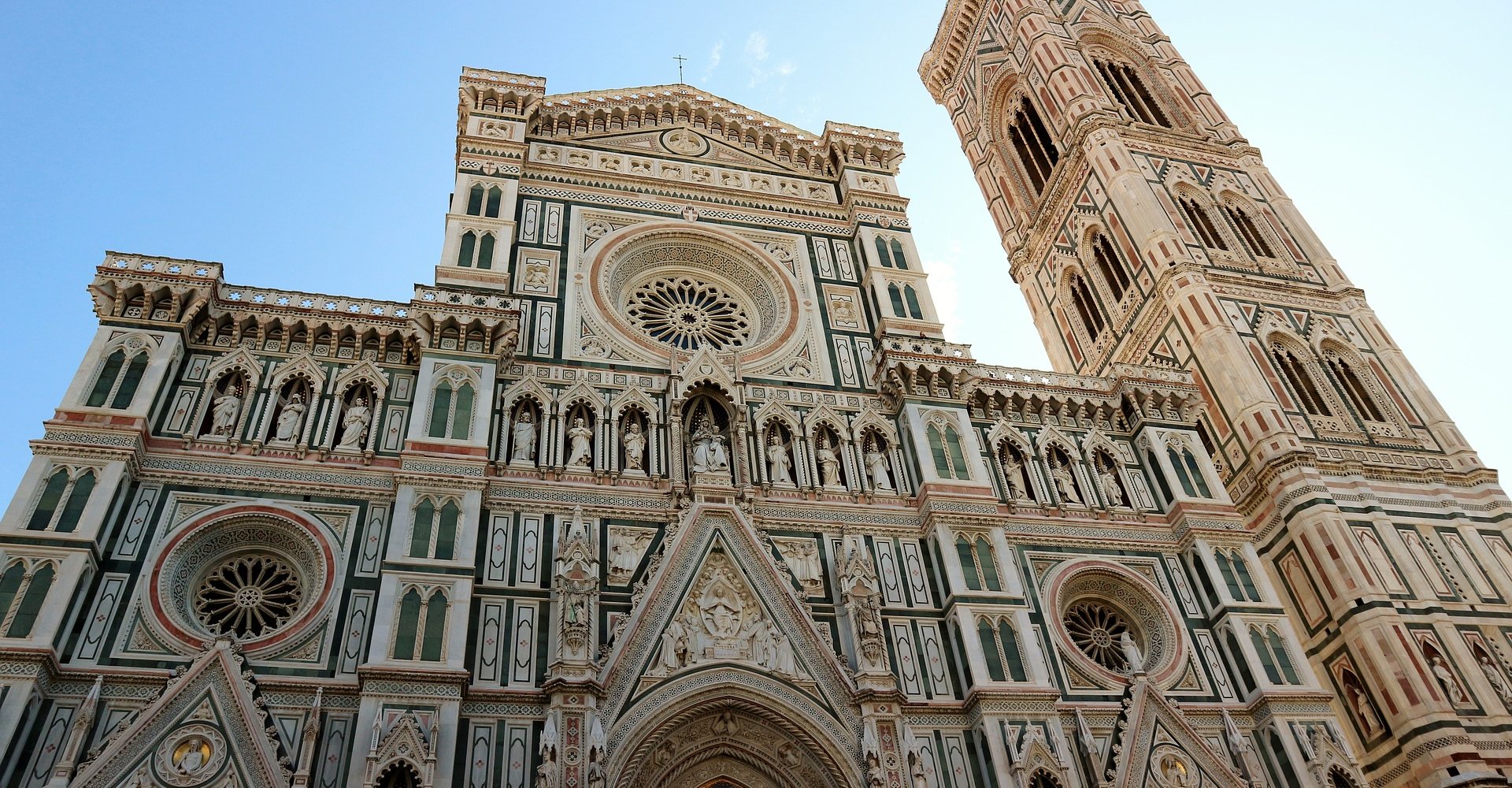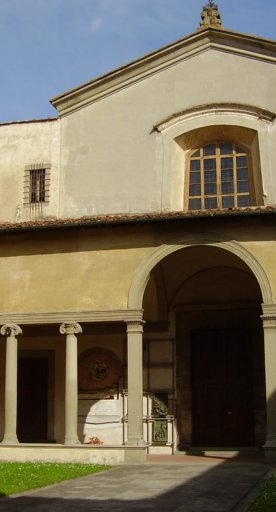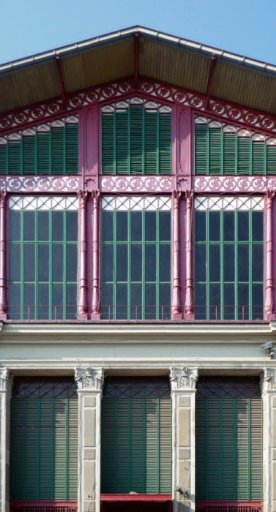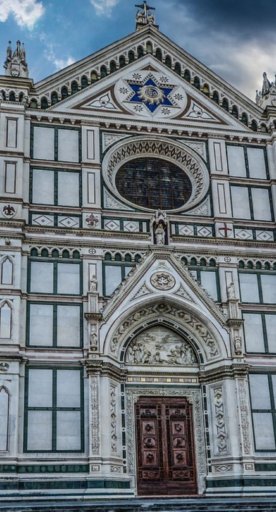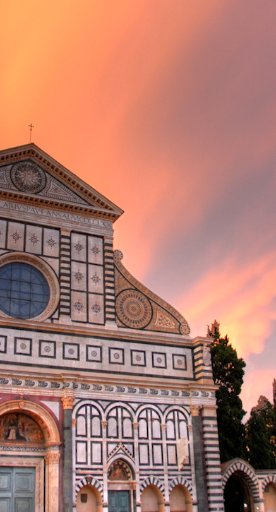Basilica of Santa Maria del Fiore, the Duomo
A gothic and imposing Florentine beauty dominated by Brunelleschi's Dome
The architecture of the Florence Cathedral, dedicated to Santa Maria del Fiore, is a typical example of Italian Gothic. The project is due to Arnolfo di Cambio, who worked on the previous building, considerably expanding the structures.
Finished in 1367, the Cathedral was covered in coloured marble based on the example on the older Baptistery, with the exception of the facade that remained unfinished and was given its current appearance as late as the nineteenth century.
The Cupola (Dome) remained to be built. Lorenzo Ghiberti and Filippo Brunelleschi proved the winners of the competition held in 1418 among the city’s architects, but it was Brunelleschi who eventually came up with the definitive plan and extraordinary technique with which the Cupola was erected, to be completed in 1436.

Outside, stands out the so-called Porta della Mandorla, which earns its name from the aureola encircling the figure of the Madonna in Nanni di Banco’s Assumption relief.
Inside, the church is shaped into three naves, divided by large pillars. At the base of the pillars the architectural elements begin, which culminate in the ogival vaults. The dimensions are enormous: 153 metres long and 38 metres wide. The simple and austere interior gives a distinct feeling of emptiness. The Cathedral of Florence is the first of its kind in terms of dimension and structure.
The floor in multi-coloured marble was designed by Baccio d'Agnolo and continued, from 1526 to 1560, by his son Giuliano, Francesco da Sangallo and other masters (1520-26). During the restoration work, following the 1966 flood, the discovery was made that some marbles taken from the unfinished façade, demolished at that time, had been used, upside down, in the floor.
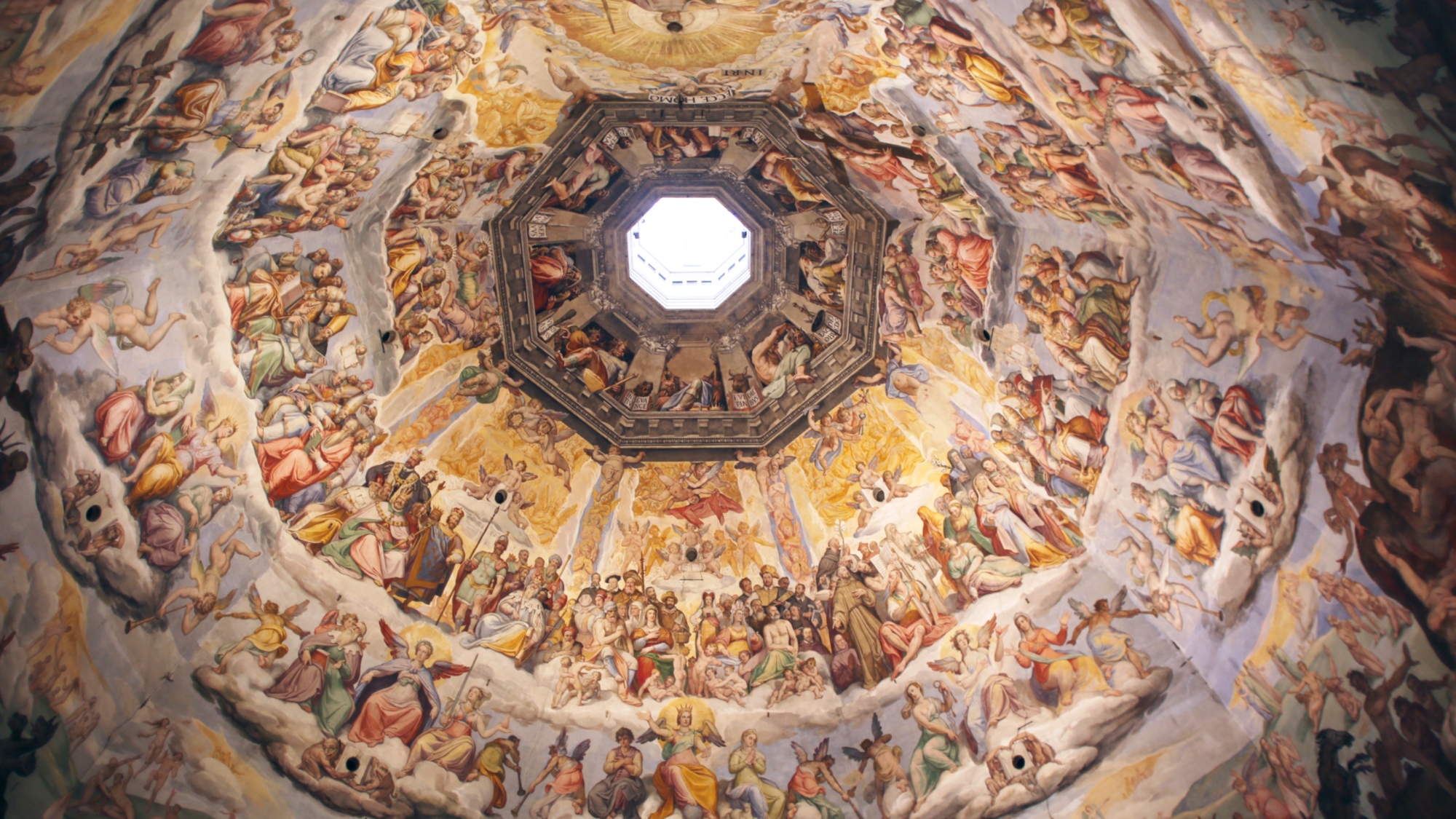
Among the artworks housed in the Cathedral, on the left wall are two frescoes representing the equine monuments of the mercenaries Giovanni Acuto and Niccolò da Tolentino, which were executed by, respectively, Paolo Uccello (1436) and Andrea del Castagno (1456.) Paolo Uccello is also responsible for the frescoed clock on the interior facade, with four robust heads of saints.
The Cathedral’s sculptures still on show include the lunettes by Luca della Robbia placed over the doors to the Sacristy, while removed and housed in the Opera del Duomo Museum is Michelangelo’s Pietà (1553), together with numerous other original works from the Cathedral (such as the statues that adorned the first facade), from Giotto's BellTower and from the Baptistery of San Giovanni.
Equally beautiful are the stained glass windows, mostly created between 1434-55, which follow designs by some of the greatest artists of the Florentine Renaissance: such as Donatello, Andrea del Castagno and Paolo Uccello.
The interior of the Dome was frescoed between 1572-79 by Giorgio Vasari (1511-1574) and Federico Zuccari (ca. 1540-1609), and represents the Universal Judgement. The ascent to the Dome also allows for a close encounter with this masterpiece.
The marvels of the ceiling should not overshadow the Cathedral's other treasure. Hidden under the floor is the Santa Reparata Crypt with the remains of the ancient basilica, evidence of the very first Christianity in Florence and probably among the largest early Christian complexes in Tuscia.
Accessibility information: duomo.firenze.it
